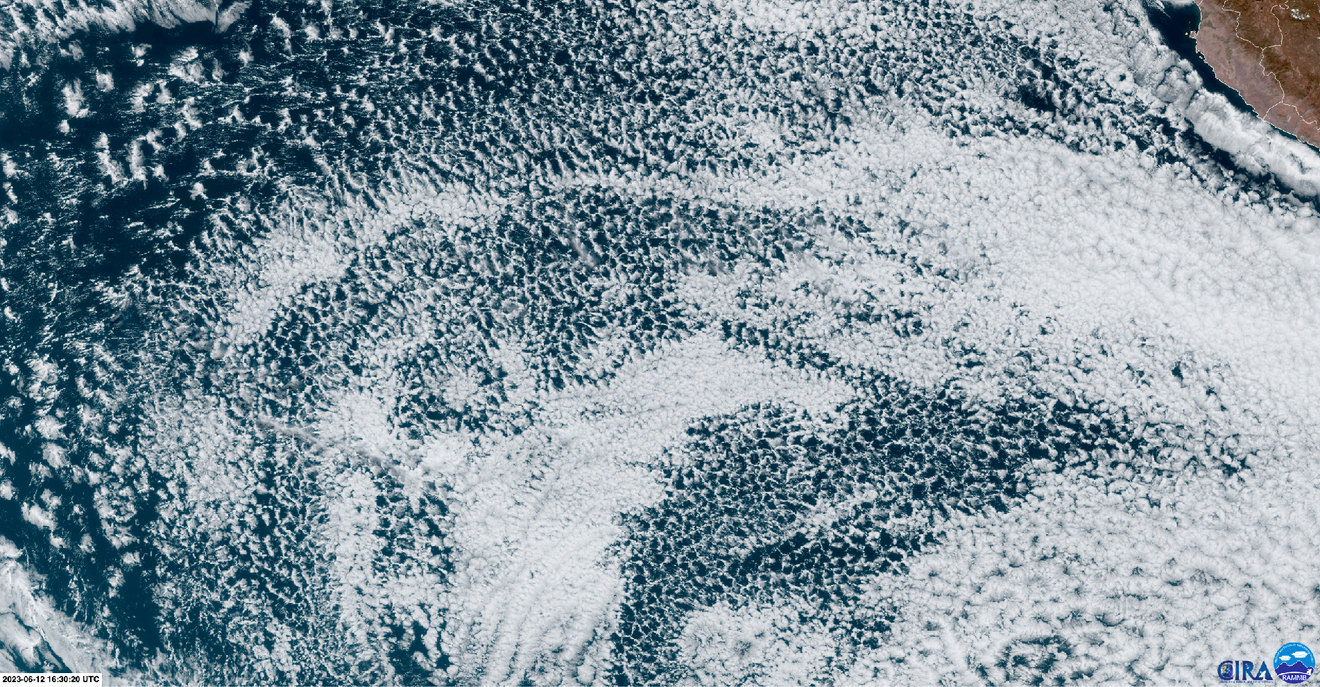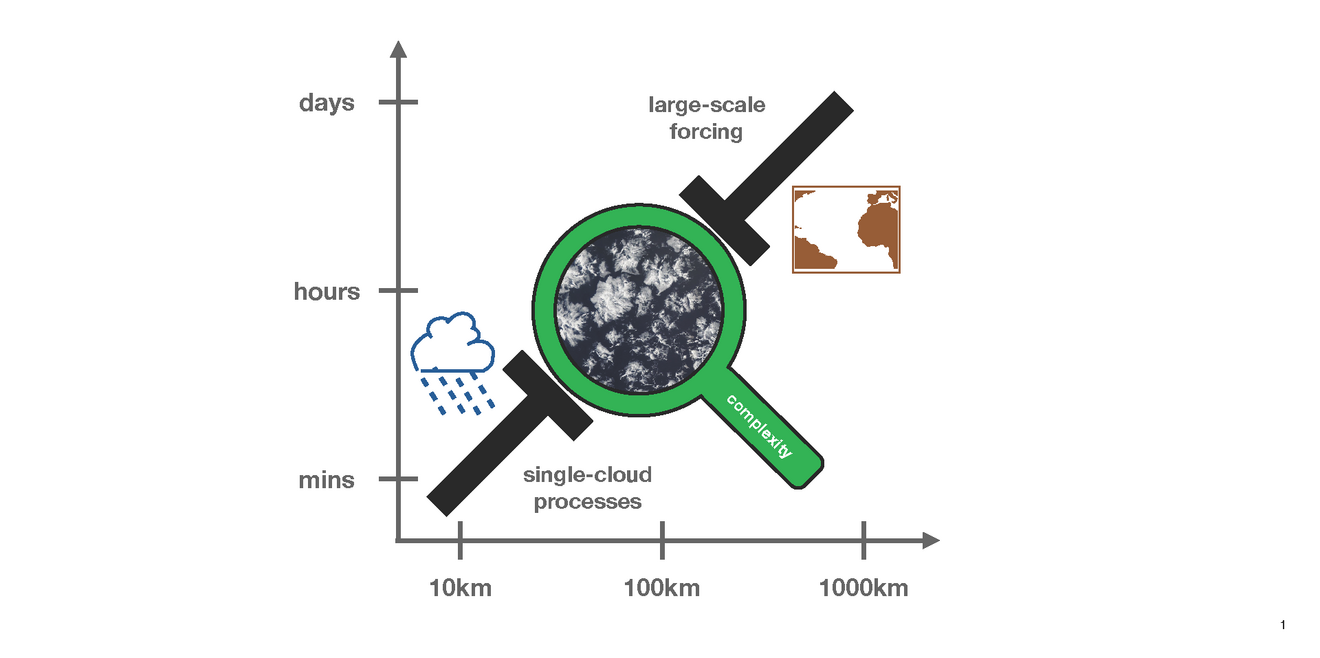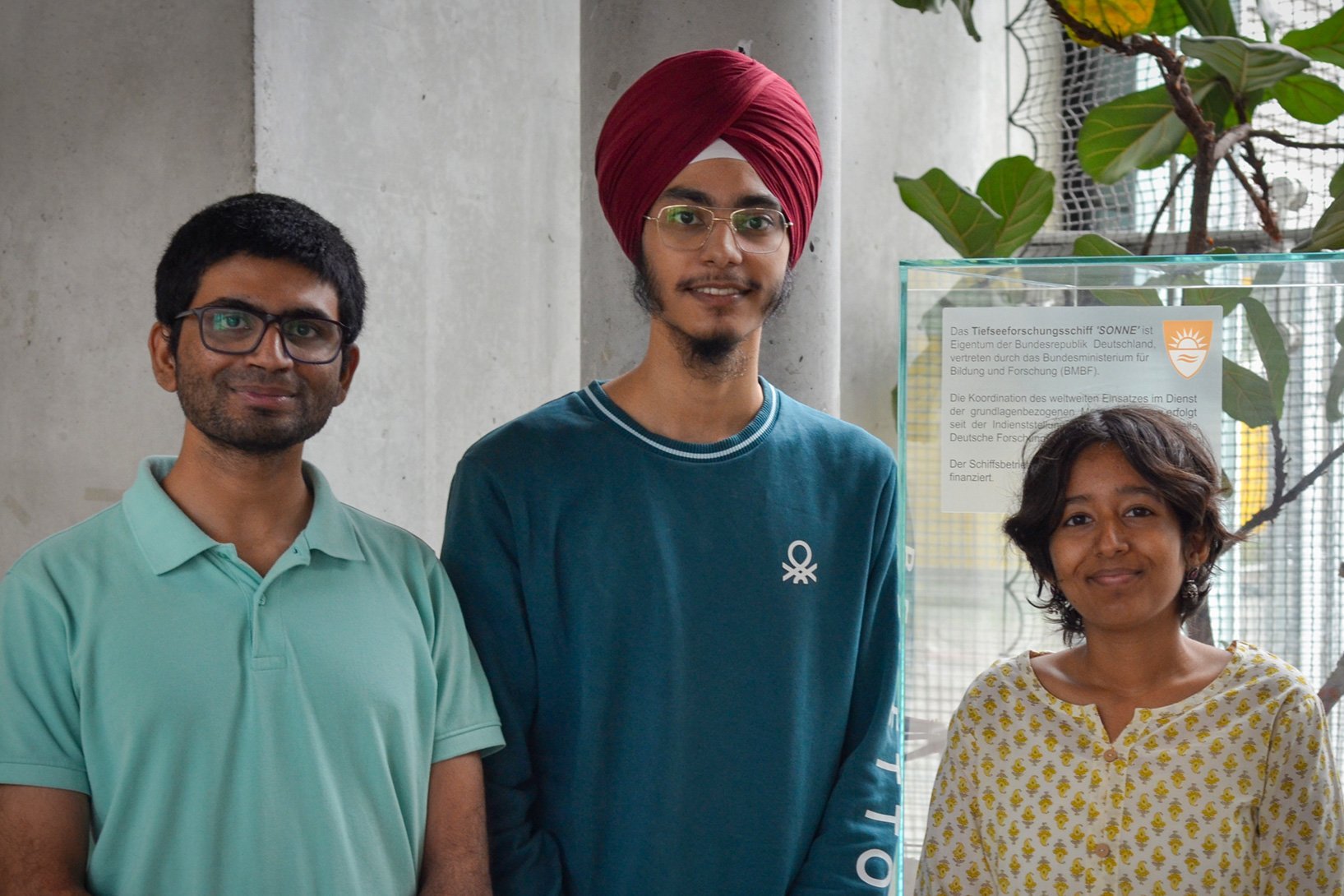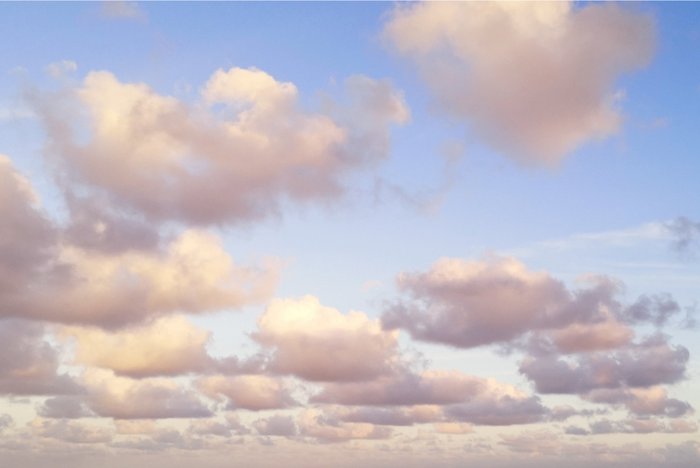
Multiscale Cloud Physics
Lise Meitner Group
Our research is motivated by the complex processes and interactions within the climate system and we develop approaches to capture this complexity.
We especially explore the multiscale nature of the atmosphere as manifested through clouds: Microscopic cloud droplets and cloud ice form with the help of even smaller atmospheric aerosols. Zooming out, they fuse into the fractal shapes of individual clouds which puzzle the casual observer. Taking a bird's-eye view from space, we can see that individual clouds organize into intricate mesoscale patterns. These pattern in turn interact with the large-scale atmospheric conditions that govern them. Despite our deep appreciation for the seamless imprint of cloud processes across scales, atmospheric theory assumes a scale separation between the cloud-formation and the large scales processes, essentially excluding the mesoscale. We aim to fill this scale gap.
Methodologically, we combine concepts from dynamical systems theory and statistical physics with a range of data sources. Although simulation data is always limited in the range of scales it represents, it allows us to reduce complexity and study specific scales in isolation. Observational data can capture the full multiscale coupling. Here, the challenge lies in sampling the temporal evolution of cloud systems.

Group members and publications
Contact
Dr. Franziska Glassmeier
Group leader
Phone: +49 (0)40 41173-469
franziska.glassmeier@mpimet.mpg.de
More Content

Observations, theory, and machine learning: Three guests from the IISER-MPG program start their work
During their several-month research stay at the Max Planck Institute for Meteorology, master's students Srinivas Adireddi, Medha Murti, and Chitvan…

Lennart Bengtsson is celebrating his 90th birthday
The Max Planck Institute for Meteorology congratulates its former director, Lennart Bengtsson, on his special day.

